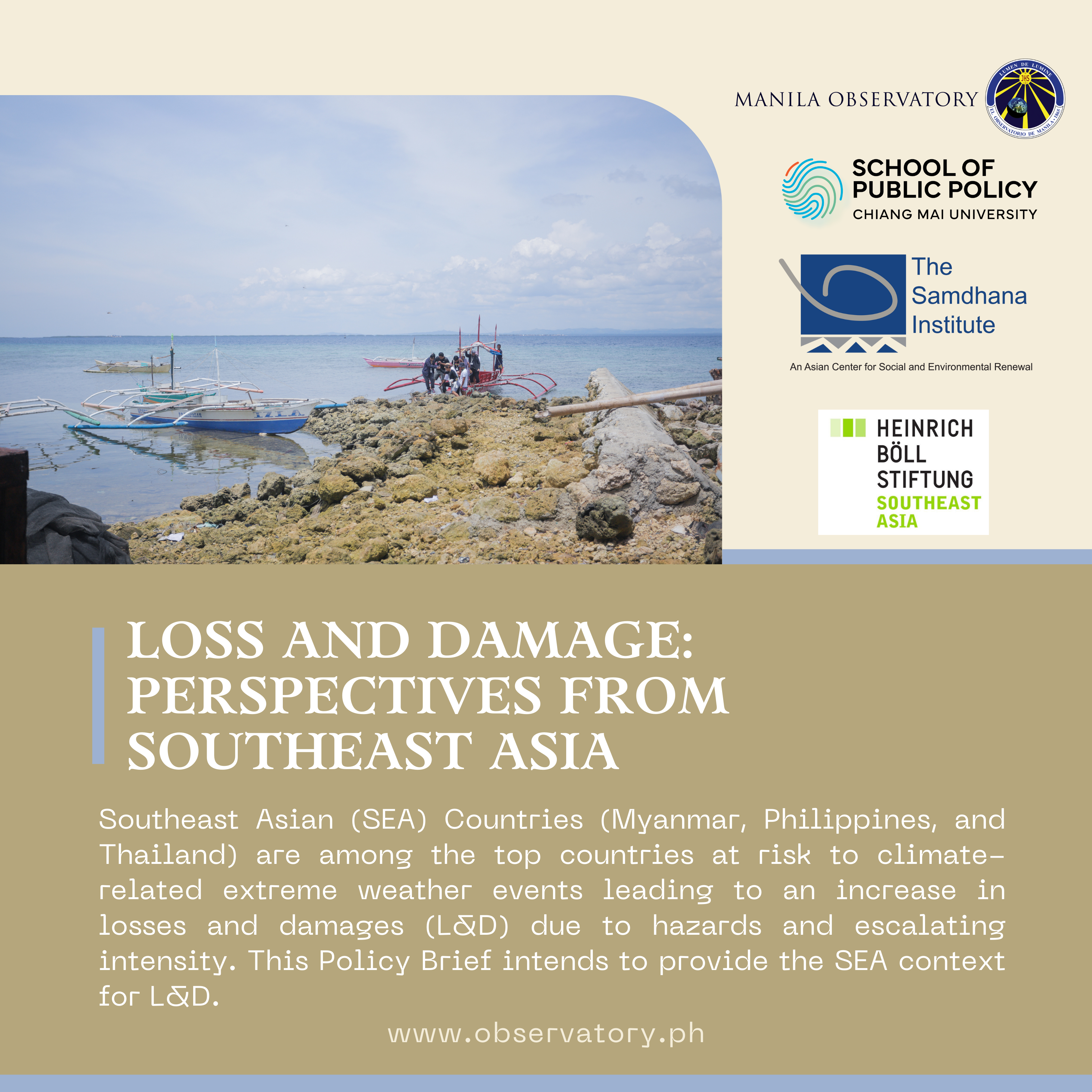By [Manila Observatory] Antonio La Viña, Joy Reyes, Ma. Laurice Jamero, Lora Batino [Chiang Mai University] Warathida Chaiyapa, Boonsuchada Inthapat, Neo John Joseph Sacramento [The Samdhana Institute] Joan Jamisolamin
According to the Global Climate Risk Index, among the top ten countries at risk of climate-related extreme weather events, three (3) are from Southeast Asia (Myanmar, the Philippines, and Thailand). As these climate hazards increase in intensity, outweighing the ability of vulnerable groups and communities to adapt, losses and damages will also increase.
In Southeast Asia, these losses and damages are becoming more apparent in the face of slow-onset and extreme climate events. With partners Chiang Mai University and The Samdhana Institute, this policy brief aims to provide the Southeast Asian context for losses and damage as part of the Stockholm Environment Institute’s Strategic Collaborative Fund 2. This is also made possible through the generosity of Heinrich Böll Stiftung – Southeast Asia and The Samdhana Institute.
Download Here:
Key Messages
- Countries in Southeast Asia have a high risk of experiencing extreme weather events such as typhoons, heavy rainfall, droughts and flooding due to their geographical locations and human-induced climate change.
- These weather events have become so extreme that countries and communities are now reaching the limits of their abilities to adapt and thus loss and damage is and will continue to be a reality. These are known as losses and damages.
- The region is experiencing both economic losses and damages, or losses of goods and services that are normally traded in market, and non-economic losses and damages, which do not fall under the previous category.
- Given the severity of the losses and damages vulnerable countries face, particularly in Southeast Asia, and the absence of funding mechanisms that address them, a financing facility is needed. This financing facility should be additional to existing adaptation and mitigation financing mechanisms, should be immediately accessible, should not impose additional burdens on communities, should build on the capabilities of vulnerable communities, and should be founded on equity and justice.


